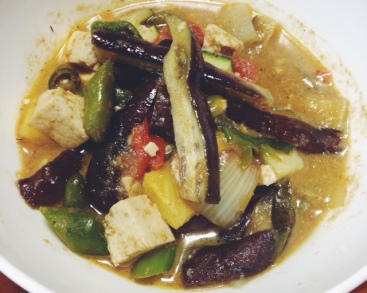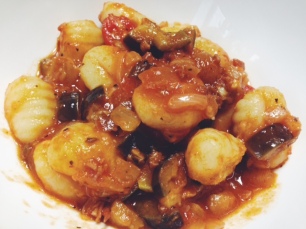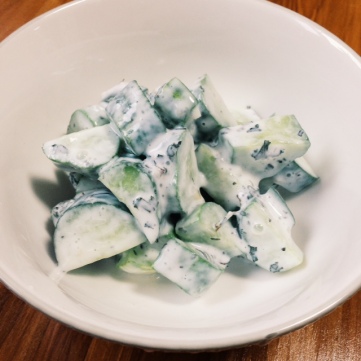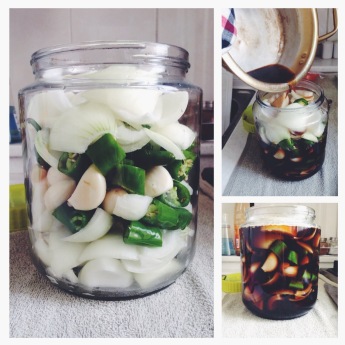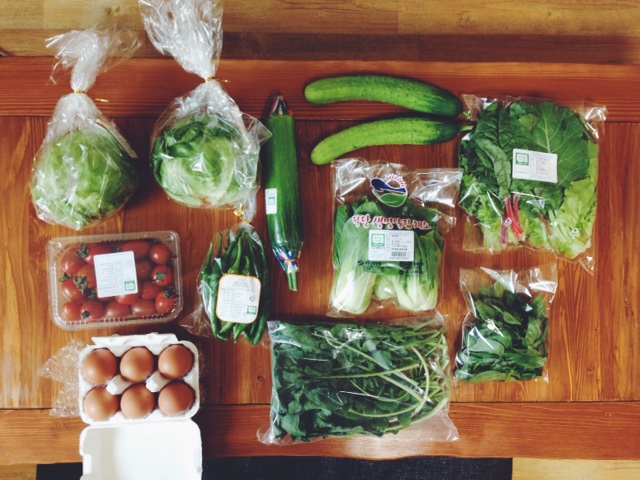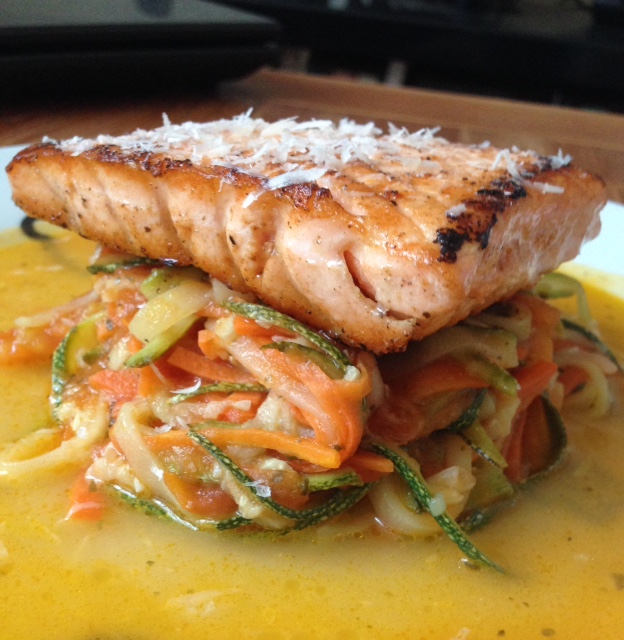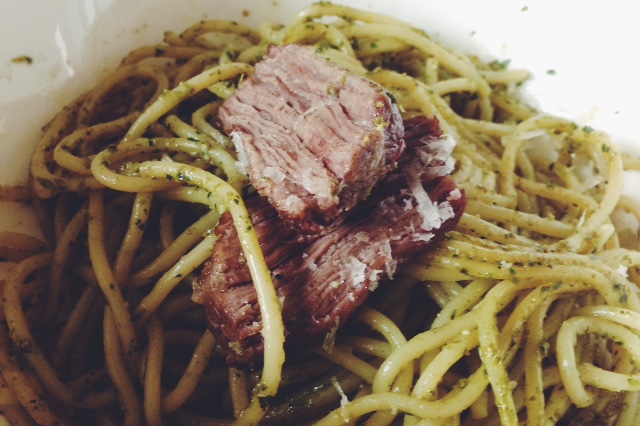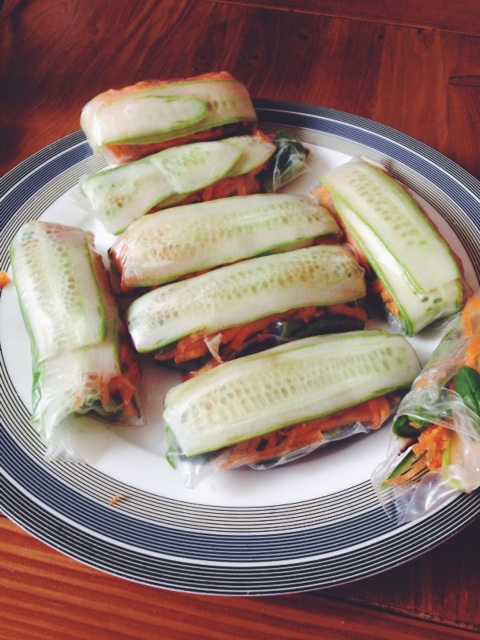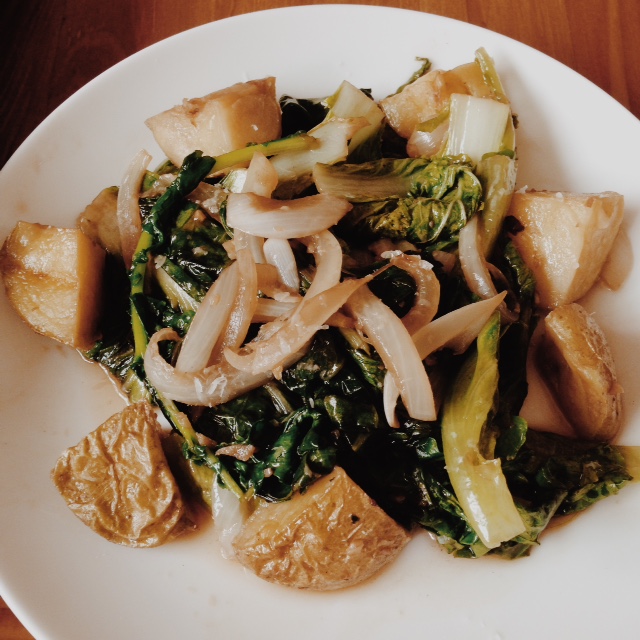By Taryn Assaf
Summer can be a difficult time for farmers. Weather can be unpredictable, with high temperatures, too much or too little rainfall; crop eating pests are at their peak. That hasn’t stopped the gorgeous leafy greens and fragrant herbs from growing on Gachi farms. Most people would be weary of buying greens with little holes in them, bruised fruits, or yellowing herbs. We prefer perfection: our greens rich in colour, glistening in the supermarket spotlights; our fruits shining and vibrant; and our veggies without a spot of dirt. You’d be hard pressed to find any evidence that most produce ever existed in an ecosystem. How much food goes to waste simply because its appearance is deemed less than perfect?
The items in my Gachi box are not perfect- and that’s what I love about them. I can feel the carrots being pulled out of the earth as I wash the dirt off them; I can see the rows of leafy greens swaying in the wind as I examine their little holes; I can feel the pride in the harvest of herbs when I receive such plush portions. My relationship to food is changing. I used to be a huge food waster. I was guilty of being afraid of the less than perfect produce. But, I grew wiser, and learned that even a yellowing piece of lettuce can be eaten in a salad and not take away from the freshness or taste. I learned that a bruised apple or orange doesn’t foreshadow the taste of the flesh and that I, like so many others, had little idea what food actually looks like.
I’ve just received my fourth box, but this post will detail some of the items I made with the vegetables from my third box. To reiterate some key points about this package:
- The produce is not enough on its own, but is a great foundation for the weeks’ meals
- You will need to supplement with other items to create well-balanced meals
- The element of surprise really incites creativity in the kitchen
- The food is seasonal, meaning you’ll likely encounter produce you’ve never dealt with before, which also means you may have to do a little research before meal time (hence this post!)
OK! On to the food (again, pics are NOT FOODIE STATUS. I’m about making good tasting food that looks like a normal person cooked it, but moreso I can’t bear to waste time making my food look good for a photo when I could be eating it). In my third box, I received:
Eggplant, onions (not pictured), green peppers, a variety of greens (perilla leaf, arugula, salad greens), buchu (garlic chive), blueberries, six eggs, two cucumbers and a bunch of arugula.
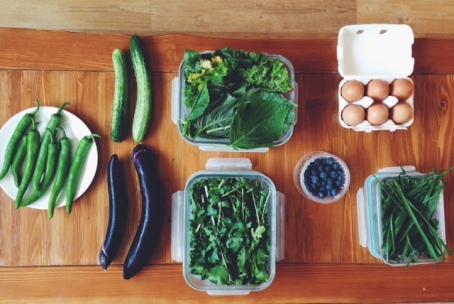
I have a bunch of portioned hanu (Korean beef) in my freezer that has been waiting to become a good topper. I used to love the combination of steak and arugula when I was living in Canada, so the first thing I made was a steak and arugula salad.
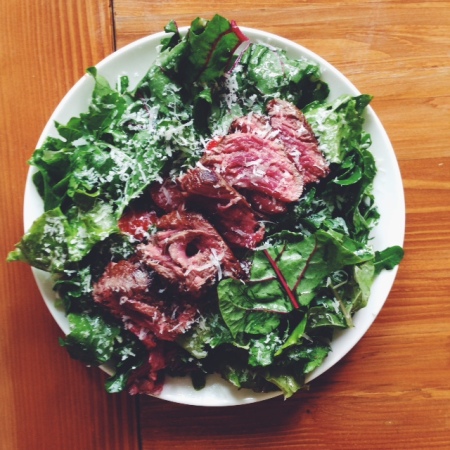 I plumped up the salad with some of the other leafy greens I was given and made a light, lemony vinaigrette. I added some cherry tomatoes from a previous box for good measure, and topped it with a juicy, seared steak.
I plumped up the salad with some of the other leafy greens I was given and made a light, lemony vinaigrette. I added some cherry tomatoes from a previous box for good measure, and topped it with a juicy, seared steak.
Arugula is an amazing green. It’s peppery and fragrant and has a strong flavour. It’s amazing on top of pizzas (proscuitto, parm, mozzarella and arugula is my favorite), in or around anything with steak (steak sandwiches/salads), as the star of the show in an Italian style niciose salad (with lemon, salt, and olive oil dressing and topped with tuna), or even just tossed in lemon juice and placed on top of a piece of fried pork cutlet.
I was so excited about the eggplant. I love to use eggplant in almost anything because it is so versatile; I usually use it in place of animal proteins because of its thick, meaty texture- that means stews, sauces, sandwiches and other meals I would usually prepare with meat get eggplant instead. So I went ahead and prepared a Thai green curry with eggplant (and literally every other vegetable I could use up) and an eggplant parm inspired gnocchi (the gnocchi I got off iHerb.com). Both lasted me a few meals each. I contemplated making baba ganoush, but opted instead for a couple meals with more vitality.
Cucumber is so common that I doubted whether or not I should include it in this post. However, I got really excited about making one of my favorite summer salads: salatat laban wa kh’yar (in Arabic), or, cucumber yogurt salad. It was really difficult for me to find the right yogurt for this recipe (if anyone knows where to order quality, preferably home made greek yogurt, hit me up!) so the yogurt I used was not as thick as this salad usually calls for. There are five ingredients here: cucumber, plain yogurt, dried mint (you can use fresh) garlic and salt. All to taste. Since the yogurt was runny, I only just coated the cucumber, but normally the bowl would be full.
My absolute favorite Korean side dish are pickled vegetables. When I saw onion and green pepper in the box, that’s immediately what came to mind. Together with some garlic that I received the week before, I made my very own. I combined everything in one container, boiled the pickling brine and poured it over top. I let it sit for a few days in the fridge before tasting, so all the brine could really soak in. Since I like my pickled veggies a little sweeter and more sour than what I’ve tasted in the restaurants, I added a little more vinegar and sugar than the recipe called for: 2 cups water, one cup soy sauce, and somewhere between a quarter and a half cup each of vinegar and sugar.
Finally, I used all the perilla leaves I received to make perilla leaf pesto. I’ve been eating pesto or some version of it for 2 months now thanks to Gachi, and I’m not complaining (is there such a thing as too much pesto? No. There isn’t). It’s the exact same recipe as basil pesto, except sub perilla leaves for basil. It tastes very similar, and the perilla leaf flavour, usually overpowering, comes out subtly and smoothly. I tried it a variety of different ways: hot with whole wheat linguine, for a more western feel, and cold with buckwheat noodles, topped with cucumber and eaten with a side of pickled radish, for a more summery Korean noodle feel. Both were great. I didn’t take any pictures, because it looks exactly like basil pesto, (which isn’t very interesting) and everyone knows what that looks like.
What came of the blueberries and buchu? I mixed them into random meals at random times.
So I guess I’m still very much enamored with my community supported agriculture. The box I received this week is even more exciting, challenging and inspiring than what was featured in this post, and I look forward to continuing my culinary endeavors and sharing them. Have you subscribed yet?
